Any owner of a furry beauty is difficult not to think of her as a child, even when she reaches old age. Since many cats retain their adolescent drive into adulthood, the question arises, when do they become adults and at what age is their final formation completed? Age and breed play a significant role in when a kitten becomes an adult cat.

- Your cat's age in terms of human years
- Signs of aging in a cat
- How gender and breed affect a cat's size
- Purebreds and mixed breeds
- Participant Biography
- From Kitten to Cat.
- An adult cat (seven to ten years old)
- Elderly and senior cats (eleven years and older)
- Older cats (11 to 14 years old)
- How to choose a large or small cat in a litter
- Kittenhood Stages
- Newborn .
- The first month
- Second month
- Third-Fourth Months
- Adolescence
- When a kitten becomes an adult
- Approximate age
- Which animals mature faster
- Which animals mature later?
- Nutrition
- Special needs
Your cat's age in terms of human years
The aging process in cats, like in humans, is individual. Different animals show signs of aging at different times. However, the first signs of aging in a cat usually show on a cellular level at age seven, but you won't notice any outward signs until your cat is about 12 years old. From this point on, cell activity slows down and various organs of the animal, including the heart and the immune system, do not work as efficiently.
One can compare conventionally the age of a cat and a human: a cat at 10 years of age corresponds to a 56-year-old human. Cats often live to be 20 years old, which corresponds to 96 years in humans.
Signs of aging in a cat
Every cat shows signs of aging differently, but there are some common features of the process. The cat's sense of smell, taste and hearing become dulled, and this affects the cat's appetite. In addition, appetite can be impaired due to dental problems, such as wiping and loss of teeth or gum disease. A combination of these problems can lead to weight loss.
The cat's joints become less flexible, especially if the cat has osteoarthritis, which can cause severe pain and limit mobility. Loss of flexibility affects the cat's ability to lick the coat, which leads to deterioration of the coat and skin.
The coat turns gray and you may notice deterioration as the sebaceous glands that feed the skin work less efficiently. As we age, there tends to be a decrease in the body's natural immune response capacity, which puts the cat at greater risk of contracting infections and developing diseases. Certain metabolic processes, such as digestion, also change as the cat's absorption of dietary nutrients decreases as it ages.
Older cats may change behavior – they stop contacting their owners or they vocalize in the late evening or at night. They may sleep more, but their sleep becomes less deep, which can disrupt their routines and cause behavioral problems.
How gender and breed affect a cat's size
When a cat officially becomes an adult, it reaches its final size. A cat's size is determined by its genetics: the average domestic cat weighs between 3 and 7 pounds, is about 45 cm long and about 25 cm tall. A cat's weight may fluctuate with age, but physical traits such as size, eye color, body length, coat pattern and texture are fully formed by the age of two. Cats are usually larger than cats in height, body length and weight. According to Science Daily, a similar pattern is observed in most mammalian species, which researchers attribute to natural selection.
Depending on the breed, some pets may be smaller or larger than average when they reach their final size. The International Cat Association recognizes 71 purebred breeds, as well as a number of mixed breeds, each with their own size standards. The Merck Veterinary Manual states that "the difference between the largest and smallest breeds of domestic cats is no more than 2-5 kg. However, in the case of small creatures such as the domestic cat, this is a very significant figure.
The weight of the average cat is based on cats with a healthy weight and normal fatness score. Pets that are overweight or underweight may differ from these averages, so it is best to discuss with your veterinarian the ideal weight for your furry pet to keep him or her in excellent health.
Purebreds and mixed breeds
As Cornell University's Cornell Center for Cat Health notes, it's easier for purebred cat owners to understand their final size than mixed-breed owners – the latter's size is difficult to estimate for certain. For example, male Maine Coon cats can weigh up to 13 kg and be up to one meter long, and the smallest breed of Singapore cat weighs no more than 3.5 kg and measures only about 20 cm high and 30 cm long. Not only are Singaporeans smaller than other cats, but they also reach adulthood later, around two years old.
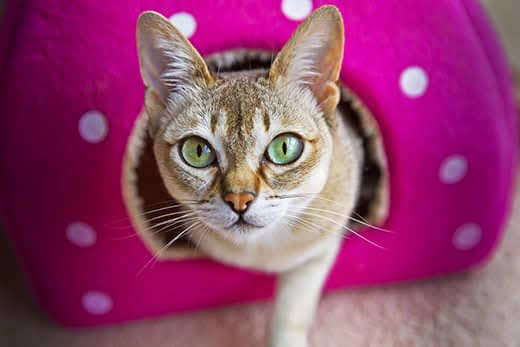
Mixed breeds of cats are an amazing mix of several breeds, resulting in a unique cat. Its size is impossible to predict, but it is very interesting to watch as the kitten gradually acquires dominant traits as it becomes an adult.
If you take a kitten or very young pet and raise it, you can have great fun watching its character and temperament develop. As your furry friend grows up, it's important to provide him with a balanced diet appropriate to his age, so he gets all the vitamins and nutrients he needs. Then all the changes will be a pleasure!
Participant Biography
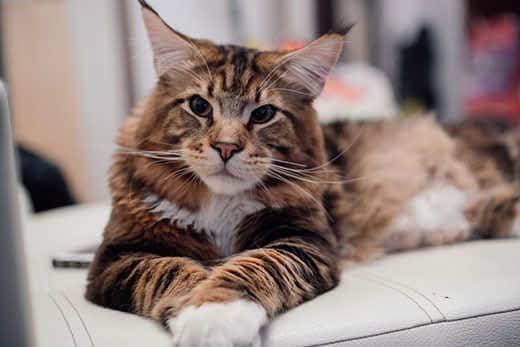
Christine O'Brien is a writer, mom, and longtime owner of two Russian blue cats who are the mainstay of the home. Her articles can also be found on Care.com, What to Expect and Fit Pregnancy, where she writes about family life, pets and pregnancy.
From Kitten to Cat.
Development from kitten to cat is synonymous with a cat becoming an adult. At the age of one year, cats are considered adults. At this time, you should review your pet's needs for food, exercise and mental stimulation as the cat's activity level naturally decreases.
While kittens need a rich diet high in calories to help them through the important stages of growth, cats do not have as high a calorie requirement, and you will need to start cutting back on their nutrition. If you do not properly limit your cat's food intake, he will begin to slowly gain weight as his physical activity level decreases.
Nevertheless, you need to continue to use positive reinforcement for your cat as his personality is still developing. If you want a friendly cat, encourage her to meet new people and pick up guests in your home. If you want an adventurous cat, praise her when she goes outside, and if you want a cat that will hunt small critters on your property, praise her whenever she brings you a "gift."
An adult cat (seven to ten years old)
An adult cat roughly corresponds to a middle-aged person 40-50 years old.
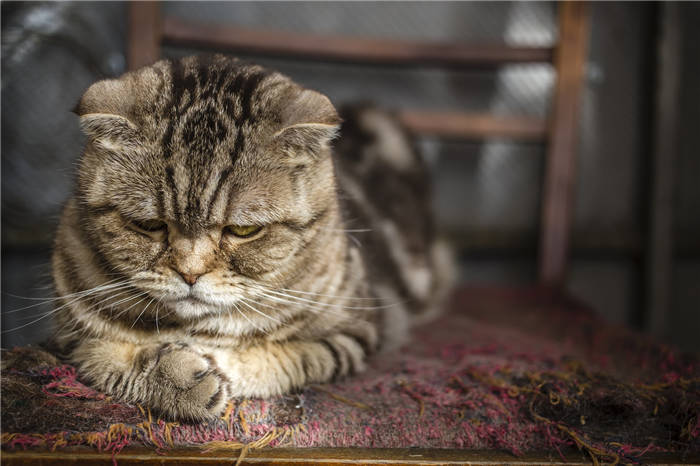
- Appearance. Externally, your adult cat may not be any different from a cat in its prime, especially if it remains active. However, animals at this life stage are more prone to weight gain and obesity, so it's not unusual for a cat to gain weight and have a less shiny coat.
- Behavior. Although some pets remain active and playful even in old age, it is not unusual for an adult cat to become more quiet and passive.
- Care and training. As with a younger cat, you may occasionally need to reinforce learning, but not often. Taking care of animals at this stage is more complicated because they are not only more at risk for obesity and related health problems such as diabetes and high blood pressure, but also at risk for cancer and other diseases such as kidney or thyroid disease. You should take her to the vet for regular check-ups and also monitor her closely at home for signs of illness, such as weight loss, atypical vomiting or diarrhea.
- Nutritional needs. Adult cats need a certain set of nutrients to keep their bodies in perfect shape. It includes vitamins C and E to support the immune system. If she is prone to gaining excess weight, you may need to adjust her diet to her activity level.
Elderly and senior cats (eleven years and older)
Cats go through two life stages in their old age. Cats that are between eleven and fourteen years old are considered elderly, which roughly corresponds to a person 60-70 years old. Cats fifteen years of age and older are considered elderly.
- Appearance. Older cats are likely to show signs of aging, such as more and more graying in the coat and a general loss of luster in the fur. These features may become more pronounced as they age.
- Behavior. Cats in these later stages of life are increasingly susceptible to disease and pathologies, and are prone to mobility problems caused by arthritis or other joint complications. This can cause your cat to move much more slowly and may also stop using the litter box, especially if it has high walls that are difficult for her to climb over or is in a hard-to-reach place. Pets in the later stages of life are also at risk for senile dementia. Because of this, they may forget how to use the litter box, or they may even forget to eat or drink. According to the Cornell University College of Veterinary Medicine, cats with dementia often become restless and may express their excitement with loud cries.
- Care and training. Caring for elderly and elderly cats can be a challenge. You should continue to take your senior pet for regular checkups and closely monitor her for health problems. The most important thing at this stage is to make her comfortable and keep her healthy for as long as possible. Make sure it is easy for her to get in and out of the litter box and that food and water are readily available. If she is showing signs of dementia, you may need to remind her throughout the day to eat and drink. Many aging cats can live long enough to remain active in old age, they just won't play as long now. The good news is that she may now enjoy cuddling more, which will strengthen your bond even more.
- Nutritional needs. If she develops health problems, the vet will prescribe diet food for your cat as part of her treatment. Otherwise, a quality senior cat food should adequately meet all of her nutritional needs. If the pet does not drink enough water, the veterinarian may recommend switching to a wet food to help her avoid dehydration.
Older cats (11 to 14 years old)
11 to 14 years old for a cat is the equivalent of 60 to 70 years old for a human. During this period they may begin to have certain medical problems, often exacerbating chronic diseases. At the same time there is a marked decrease in physical activity.
In fact, a huge number of cats reach this stage without much sign of advanced age. And all thanks to the fact that we now know a lot more about how to properly care for them and provide them with the right complete diet. Veterinary medicine has also made great strides forward. Undoubtedly, the standard of living of domestic cats has increased and all this has generally led to an increase in the average life expectancy of our pets. Nevertheless, old age is old age and that says it all. Cats of advanced age become much more lazy and sluggish. Their health condition should be treated more carefully and you should be sensitive to the slightest change. It is not unreasonable to periodically show the cat to the veterinarian for preventive purposes.
How to choose a large or small cat in a litter
Choosing a kitten is not an easy process. If everything is clear about the sex, it is not so easy to understand the size of the future pet. With purebreds is easier, because breeders often suggest what characteristics you should pay attention to.
Thoroughbreds do not have such clear features. However, an examination of the mother and the baby will help to make a decision. A large baby is usually the owner of a large head. Its paws are stronger and thicker than those of its smaller brethren. If you look closely, such a baby eats with great appetite, eating more food than the norm.
It is important for the owner to know until what year cats grow, in order to monitor the development of the pet. Parameters of the pet depend on its heredity, breed, sex. But also care can not be neglected – it also affects the development of a fluffy kitty.
This article is a recommendation. Talk to your vet!
Kittenhood Stages
The path from newborn to adult can be divided into several stages. At each of them kitten acquires something new, developing physically and socially.
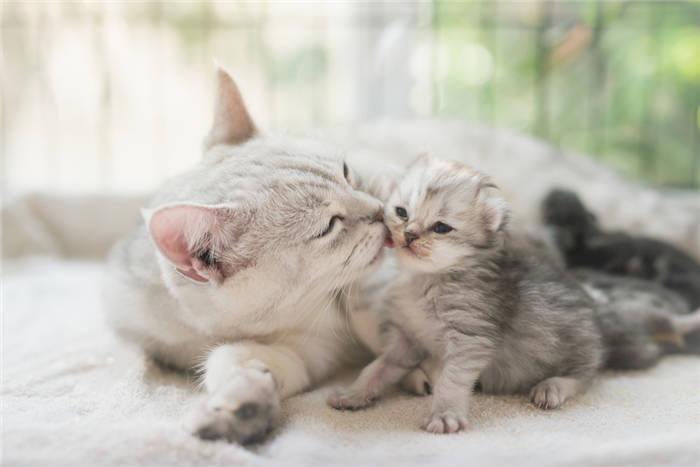
Newborn .
The first stage lasts only a week. A newborn weighs about 100 grams, orientates in space exclusively by means of smell, does not leave the "nest" and is completely dependent on its mother. She warms him with her body, feeds him, washes him, and helps him with emptying.
The first month
At the end of the first week, hearing appears, and a week later, sight appears. On the 21st to 28th day after birth, the first baby teeth erupt. At about the same time, the furry cub tries to get up on his paws. The accessible world gradually expands beyond the "nest". First social skills are acquired.
Second month
At 1-1.5 months, complementary food is introduced. The little pet is now quite confident on his paws and does not collapse while walking. He is actively playing with his brothers and sisters, with an interest in learning new things and trying to make jumps on low surfaces. Toward the end of the second month, the first deworming is carried out.
Third-Fourth Months
By 2.5-3 months, the last baby teeth – premolars appear. At this point, liquid food is completely replaced by solid food. The little pet is vaccinated and separated from its mother and transferred to a new family. There is an active growth spurt associated with the formation of the musculoskeletal system. Baby teeth are smoothly replaced by molar teeth.
Adolescence
Turning into a teenager occurs against the background of puberty. It occurs at 7-9 months. Baby down is gradually replaced by adult wool. Markedly increased body weight. The number of feedings is gradually reduced to 2-3 times a day. Kittens begin to leave scent marks and loudly call for females, and kittens begin their first heat. At this stage, animals not involved in breeding are spayed or neutered.
When a kitten becomes an adult
The age of becoming a cat or cat depends on many factors, so it is impossible to give any exact and only correct value for all. Despite this, a rough guideline does exist.
Approximate age
On average, kittens become adults at one year of age. At this age, most of them stop growing. Acquired physical traits persist until the end of life. Together with them, a character and a certain pattern of behavior are formed.
Which animals mature faster
Smaller breeds, such as Singaporeans and Munchkins, mature the fastest. They reach standard size before 10-12 months of age.
In addition to breed affiliation, it is important to consider gender, age of weaning, and housing conditions. Females develop a little earlier, especially if they regularly received hearty breast milk and were not ill.
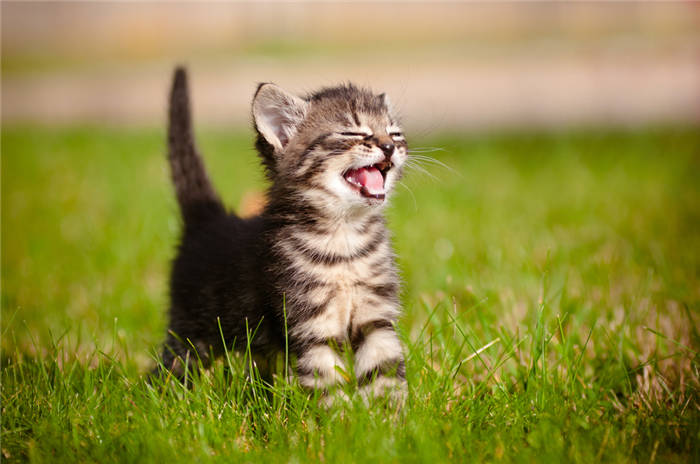
Which animals mature later?
Such big cats as Maine Coons and Siberian cats become adult only by 1.5-3 years. Also, the duration of development may be delayed in the following situations:
- Lack of mother's milk. With lactation problems, newborns take a very long time to gain weight and often suffer from intestinal disorders.
- Unbalanced diet. Switching to solid foods is a very serious and responsible step. Lack or excess of nutrients can affect your muscles and skeleton.
- Health problems. Any infections and parasitosis greatly inhibit growth. Failure to vaccinate and deworm can have dire consequences, including death.
To avoid complications, your pet's weight gain should be monitored regularly, referring to the average cat or breed-specific recommendations. Fix the figures since the birth or purchase of a kitten, noting the changes in a special diary.
Nutrition
Up to a month of age, the main diet of a kitten should be mother's milk. From the 6th week, the baby can be given complementary food. A good option is spiders for kittens. They contain nutrients for brain and vision development, bone growth, muscle formation, and are perfectly absorbed by the young body.
By two months of age, the kitten is no longer fed on mother's milk. To ensure that kittens continue to get everything they need to stay healthy with their food, it is important to choose a high-protein food with vitamins, fatty acids and minerals. At this age, kittens usually already have all their milk teeth, so they can be given both dry and wet food.
At 6-7 months, kittens can already be spayed. By this time, its body is fully formed, but sexual processes have not yet activated. Therefore, the young age is considered one of the optimal ages for this important procedure.
Sterilization at an early age helps to prevent the risk of tumors and inflammations of the genital system, and prolongs the life of the cat by an average of 1.5-2 years.
The main thing is to transfer the pet to a food for spayed kittens after sterilization. This diet contains a moderate amount of calories (respectively, prevents overweight), but at the same time meets all the needs of a growing body.
By one year, the teenage cat is gradually transferred to an adult diet. It is better to combine both dry and wet food. Hard pellets support chewing muscles and help clean the cat's teeth, while soft bits in a sauce support water balance in the body and help prevent problems with the cat's urogenital system.
Special needs
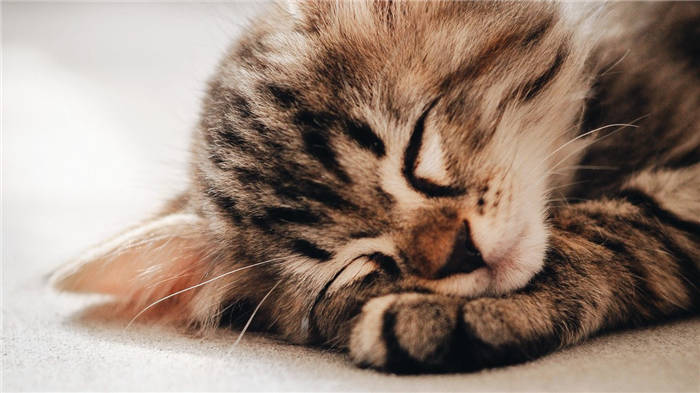
The period up to one year is the most important period in every cat's life. During this time, its body is formed and the foundations of its character are laid. In order for a cat to develop properly, it is important to take its special needs into account.
In its first days of life, it needs to be close to its mother. At 2 months of age it is careful weaning and gentle adaptation to the new environment. And as the kitten gets older and more curious, it is important to satisfy the urge to explore everything – show the baby new toys, surprise him with unusual games, walk outside. It is also important to teach your cat the rules of behavior in the house – then you and the future adult cat will have an understanding.






